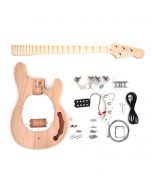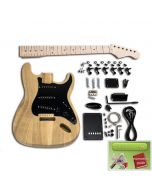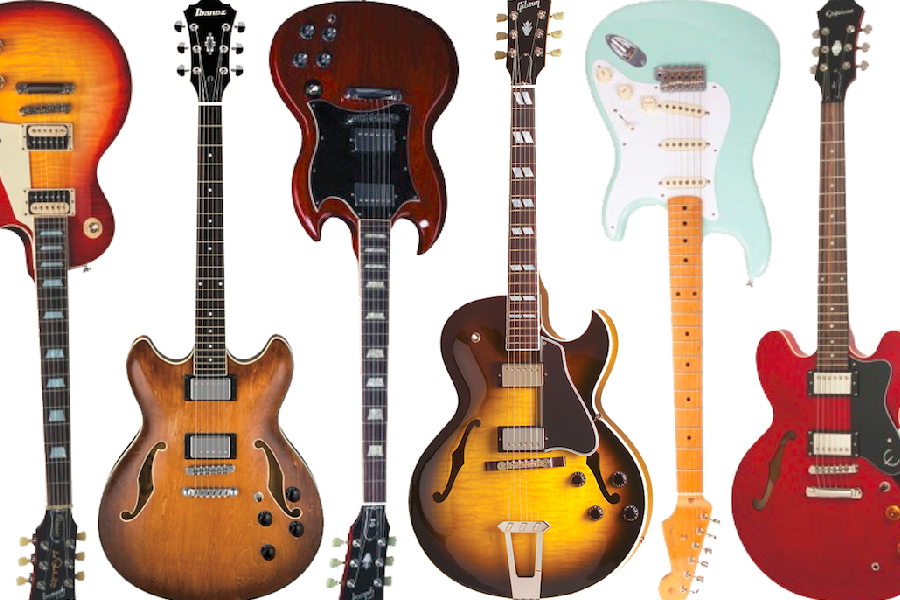ADJUST STRING HEIGHT WITH TRUSS ROD
- The Guitar Fabrik
- BUILD, SETUP & TUNE GUITAR
- Sep 20, 2023 views
- 3597

ADJUSTING GUITAR STRING ACTION WITH THE TRUSS ROD
When it comes to achieving the perfect playability on your guitar, one crucial factor to consider is the string action – the height of your strings above the frets. If your string action is too low, you'll likely encounter fret buzz, while too high an action can make your guitar harder to play. Fortunately, there are several ways to adjust the string action, including through the use of the truss rod. In this article, we'll focus on the truss rod's role in achieving optimal string action.
Truss Rod Definition: A guitar truss rod is a critical component of many types of guitars, especially steel-string acoustic guitars and electric guitars. It is a metal rod that runs through the neck of the guitar, just beneath the fingerboard, and is used to help control and adjust the curvature or relief of the neck. The truss rod's primary function is to counteract the tension exerted by the strings on the neck, which can cause the neck to bend or warp over time due to the constant pull of the strings.
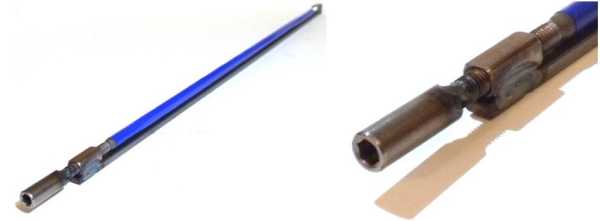
An example of a truss rod not installed on the guitar neck
Different Types of Truss Rods
There are various types of truss rods available on the market, which we can categorize as follows:
- Single Action or Double Action Truss Rods: Some guitar truss rods can only be turned in one direction, allowing you to make the guitar neck convex. Double action truss rods can turn both clockwise and counterclockwise, enabling complete adjustment to provide your guitar neck with either a convex or concave relief.
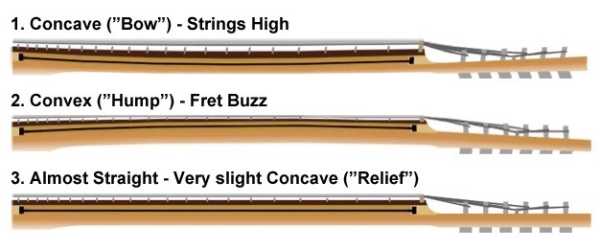
The different neck reliefs that can be achieved using a truss rod
- Neck Heel or Neck Headstock Truss Rods: The truss rod's adjustment access can be located either at the heel of the neck or at the headstock. Access at the headstock makes guitar adjustments much easier, allowing you to adjust the truss rod while the neck is attached to the guitar body.
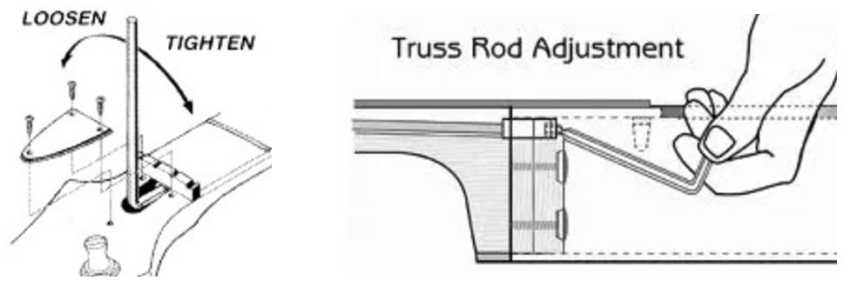
Note that the only guitar kit at The Guitar Fabric with a truss rod on the neck heel side with single action is the Electric Parlor guitar kit.
Truss Rod Adjustment
Now, let's focus on the truss rod, a crucial element for fine-tuning your string action. Here's how to adjust it:
- Before attempting any truss rod adjustment, ensure your guitar is tuned to the desired pitch.
- Then check the neck relief. To do this, use a capo at the first fret and measure the gap between the bottom of the string and the top of the 7th or 8th fret. There should be a slight gap (about 0.010" or 0.25 mm). This can be measured with a feeler gauge.
- Locate the truss rod, which is located on the headstock side or heel side, and use a wrench to adjust the relief:
- To add relief (increase the bow): Loosen the truss rod by turning the nut counterclockwise.
- To reduce relief (flatten the neck): Tighten the truss rod by turning the nut clockwise. This is where single-action truss rods are limited; they can only counteract string tension, not actively create a back-bow.
- Use an appropriate truss rod wrench or tool to turn the nut. To reduce the neck's curvature (lowering string action), turn the nut clockwise. To increase the curvature (raising string action), turn it counterclockwise.
- Make small adjustments, usually no more than a quarter-turn at a time, and recheck the string action frequently.
- It's essential to monitor the neck's response to these adjustments. Allow the neck to settle after each adjustment, which can take a few minutes.
- Re-tune the guitar after each adjustment to ensure the correct tension on the neck and check the relief again.
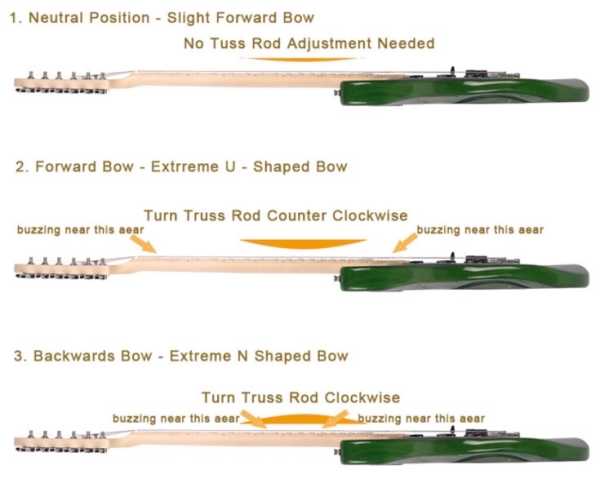
CAUTION: TRUSS ROD ADJUSTMENTS SHOULD BE MADE GENTLY, AS EVEN A QUARTER-TURN CAN SIGNIFICANTLY ALTER THE NECK'S SHAPE.
Adjusting your guitar's string action using the truss rod is a delicate process that can greatly impact your playing experience. By following the steps outlined in this article and exercising caution, you can fine-tune your guitar to achieve the perfect string action for your style and preference. Remember that patience and precision are key when working with your instrument to ensure the best results.
Related Products
Related Posts
- The Guitar Fabrik
- Jun 27, 2025
- 230views
IBANEZ CUSTOM BASS SHOWCASE
- The Guitar Fabrik
- May 29, 2025
- 345views
B.C. RICH CUSTOM GUITAR SHOWCASE
- The Guitar Fabrik
- May 1, 2025
- 147views
MUSIC MAN CUSTOM BASS SHOWCASE
- The Guitar Fabrik
- Apr 28, 2025
- 575views
 US
US FR
FR DE
DE IT
IT ES
ES
